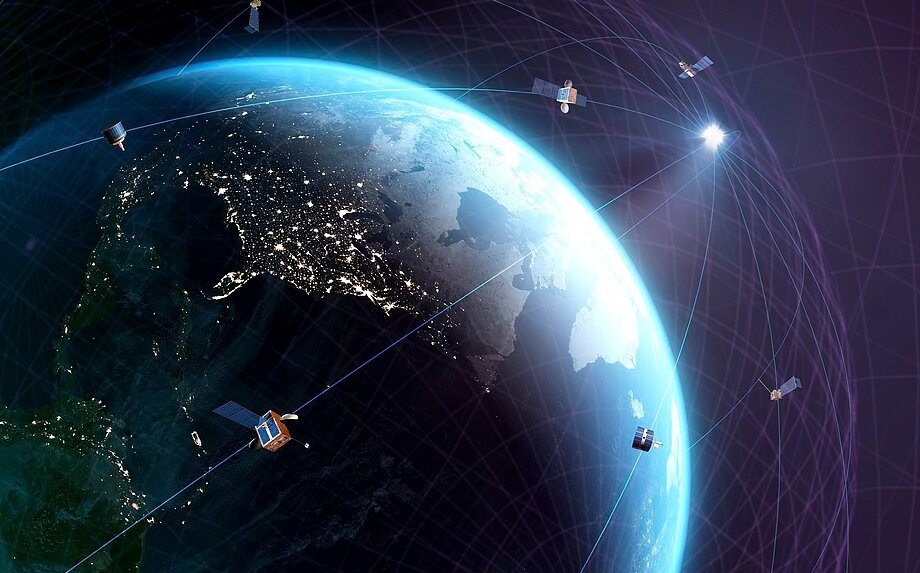China’s New Satellite Communication Guidelines: A Trillion-Yuan Ambition
China has unveiled sweeping new guidelines to accelerate the development of its satellite communication industry, signaling a bold push to transform the nation into a global leader in space-based connectivity. Released by the Ministry of Industry and Information Technology (MIIT), these policies are designed to optimize business access, stimulate commercial innovation, and foster a robust ecosystem that could unlock a market worth trillions of yuan by 2030. The guidelines have drawn significant attention from industry experts and international observers, who see them as a pivotal step in China’s quest to rival established players like SpaceX’s Starlink and reshape the global digital order.
- China’s New Satellite Communication Guidelines: A Trillion-Yuan Ambition
- What Do the Guidelines Propose?
- Low Earth Orbit Constellations: China’s Answer to Starlink
- Regulatory Reforms and Data Security
- Geopolitical Implications: Competition and Security Concerns
- Challenges and Opportunities Ahead
- In Summary
At the heart of the new policy is a vision to integrate satellite communications into everyday life, expand market access for private enterprises, and support China’s broader transformation into a manufacturing and cyber powerhouse. The guidelines set ambitious targets: by 2030, China aims to have over 10 million satellite communication users, a modernized regulatory environment, and a thriving commercial space sector that supports both domestic needs and international cooperation.
What Do the Guidelines Propose?
The MIIT’s guidelines outline a comprehensive roadmap for the satellite communication industry. Key objectives include:
- Optimizing business access and streamlining licensing for satellite service providers
- Accelerating the deployment of low Earth orbit (LEO) satellite constellations
- Promoting direct-to-device satellite connectivity, especially for smartphones
- Encouraging private sector participation and innovation
- Integrating satellite communications with next-generation infrastructure such as 5G, 6G, and the industrial internet
- Expanding applications across diverse sectors, from agriculture and transportation to emergency response and urban governance
- Strengthening international cooperation and standards-setting
These measures are intended to create a fertile environment for technological breakthroughs, cost reduction, and the emergence of new business models. The guidelines also emphasize the importance of developing core technologies, building an open standards system, and fostering a mutually beneficial industrial ecosystem.
Direct Satellite Connectivity for Smartphones: A Game Changer
One of the most transformative aspects of the guidelines is the push for direct satellite connectivity to consumer devices, particularly smartphones. This technology promises to keep users connected even in the most remote or disaster-stricken areas, bypassing the limitations of terrestrial networks. According to industry reports, commercial direct satellite communication services for smartphones are expected to launch on a large scale in 2025, with major Chinese and global companies racing to integrate satellite modules into their devices.
For consumers, this means the ability to send messages, make calls, and access basic data services without relying on ground-based infrastructure. While initial offerings may focus on messaging and emergency services, future iterations are expected to support voice and data, expanding the reach of digital connectivity to underserved regions. Pricing models in China suggest packages ranging from 200 yuan for 50 minutes to 500 yuan for 200 minutes, with per-minute rates for pay-as-you-go users. The technology is not without limitations—bandwidth will be lower than terrestrial networks, and coverage may be affected by weather or regulatory constraints—but the potential to bridge the digital divide is significant.
Boosting Private Sector and Commercial Innovation
Unlike earlier phases of China’s space program, which were dominated by state-owned enterprises, the new guidelines actively encourage private companies to participate in the satellite communication market. Firms are urged to explore flexible business models, such as leasing satellite capacity, offering value-added services, and distributing connectivity solutions to a wide range of industries. This approach mirrors the rapid iteration and market-driven strategies seen in Western companies like SpaceX, but with a distinctly Chinese emphasis on scale, integration, and state guidance.
Chinese tech giants such as Huawei, Xiaomi, and BYD are already incorporating satellite communication capabilities into smartphones and electric vehicles, reflecting a broader trend of merging space technology with consumer products. The guidelines also call for the integration of satellite communications with artificial intelligence, non-terrestrial networks, and next-generation wireless standards, positioning China at the forefront of technological convergence.
Low Earth Orbit Constellations: China’s Answer to Starlink
A central pillar of the guidelines is the accelerated development of low Earth orbit (LEO) satellite internet. LEO constellations, which consist of thousands of small satellites orbiting close to the Earth, offer several advantages over traditional geostationary satellites: lower latency, higher bandwidth, and the ability to provide global coverage, including in remote or underserved areas.
China is currently developing its own LEO constellations to rival SpaceX’s Starlink, with plans to deploy over 15,000 satellites in the coming years. These networks are expected to support not only consumer connectivity but also critical applications in national security, disaster response, and industrial automation. The MIIT’s guidelines encourage telecom operators to leverage LEO satellite internet to expand high-speed data services, promote integration with terrestrial networks, and explore new application scenarios for land, sea, and air communications.
Applications Across Industries
The potential uses of satellite communication extend far beyond personal connectivity. The guidelines highlight several key sectors where satellite technology can drive innovation and productivity:
- Agriculture: Precision farming, remote monitoring, and disaster management
- Transportation: Real-time tracking, logistics optimization, and autonomous vehicles
- Energy: Monitoring of remote infrastructure, pipeline management, and emergency response
- Urban Governance: Smart city applications, environmental monitoring, and public safety
- Emergency Services: Reliable communication during natural disasters, search and rescue operations, and field missions
By integrating satellite communications with the industrial internet, vehicle networking, and airborne platforms, China aims to create a seamless digital infrastructure that supports both economic growth and public welfare.
Regulatory Reforms and Data Security
To support the rapid expansion of satellite services, China has introduced new regulations that require all providers of direct-to-satellite communication services to maintain a local presence and rely on domestic infrastructure. This means that both domestic and foreign firms must establish operational and compliance infrastructure within China to lawfully offer such services. User data generated in China must be processed domestically, and any cross-border data transfers require prior authorization.
These measures are designed to ensure data security, protect national interests, and maintain regulatory oversight in a rapidly evolving sector. Only satellite systems approved under Chinese law may be used, and providers must comply with strict requirements for data handling and network security. This approach reflects China’s broader strategy of maintaining sovereign control over critical digital infrastructure while encouraging innovation and market growth.
International Cooperation and Standards
China’s guidelines also emphasize the importance of international cooperation and participation in global standards-setting. The country is actively involved in organizations such as the International Telecommunication Union (ITU), which manages the international radio-frequency spectrum and satellite orbit resources. By engaging in these forums, China seeks to influence the development of technical standards and regulatory frameworks that will shape the future of satellite communications worldwide.
China is also leveraging initiatives like the Belt and Road Initiative, BRICS, and the Asia-Pacific Space Cooperation Organization to expand its global service capabilities and market reach. These partnerships are intended to enhance China’s role as a provider of satellite services to developing nations, offering alternatives to Western-dominated networks and promoting a vision of “Digital China” that extends beyond its borders.
Geopolitical Implications: Competition and Security Concerns
China’s rapid advancement in satellite communications has not gone unnoticed by other major powers. The United States, in particular, views China’s LEO satellite ambitions as a direct challenge to its global operations, communications infrastructure, and the free flow of information. U.S. officials have urged allies to avoid doing business with Chinese satellite firms, citing concerns about military development, intelligence gathering, and data security.
According to a memo obtained by Nextgov, the U.S. State Department warns that Chinese law allows the government to compel domestic satellite operators to hand over sensitive business information, potentially enabling data exfiltration and surveillance. The memo also highlights the risk that Chinese satellite networks could be used to advance Beijing’s foreign-policy goals, influence international technology standards, and promote a censorship-controlled internet model that appeals to authoritarian regimes.
These concerns are part of a broader technological rivalry between China and the United States, with both sides investing heavily in space-based infrastructure and seeking to shape the rules of the emerging space economy. The competition extends to the setting of international standards, the allocation of satellite frequency spectrum, and the development of secure, resilient networks that can support both civilian and military applications.
China’s Space Strategy: Beyond Commercial Ambitions
China’s push into satellite communications is closely linked to its broader space strategy, which combines military, technological, and commercial objectives. Under the leadership of Xi Jinping, China has achieved major milestones in space exploration, including lunar missions, the completion of the Tiangong space station, and ambitious plans for Mars sample return missions. These achievements are portrayed as symbols of national pride and technological prowess, reinforcing the Communist Party’s legitimacy and inspiring public enthusiasm.
At the same time, China’s space program is methodically state-guided, with a focus on long-term strategic advantages. The recent reorganization of the People’s Liberation Army, which created an independent Aerospace Force, underscores the military significance of space-based assets for intelligence, communication, and potential “first strike” operations. Space is viewed as a critical domain for both peacetime competition and wartime operations, with satellite communications playing a central role in ensuring resilience and operational superiority.
Challenges and Opportunities Ahead
While the new guidelines set an ambitious course for China’s satellite communication industry, several challenges remain. The race to deploy LEO constellations is highly competitive, with Western firms like SpaceX and AST SpaceMobile already making significant strides. Securing access to limited orbital and frequency resources will require deft negotiation and international cooperation. Ensuring data security and regulatory compliance, especially for foreign firms operating in China, adds another layer of complexity.
On the other hand, the opportunities are vast. By integrating satellite communications with emerging technologies such as 5G, 6G, and artificial intelligence, China is well positioned to drive innovation across multiple sectors. The expansion of direct-to-device connectivity promises to bridge the digital divide, enhance emergency response capabilities, and support the growth of smart cities and autonomous systems. As private enterprises and state-led projects converge, the potential for new business models and global partnerships is immense.
In Summary
- China’s new satellite communication guidelines aim to create a trillion-yuan industry by 2030, with over 10 million users and a modernized regulatory environment.
- The policies promote direct satellite connectivity for smartphones, integration with next-generation infrastructure, and expanded applications across key industries.
- Private sector participation and commercial innovation are strongly encouraged, reflecting a shift toward market-driven strategies within a state-guided framework.
- China is accelerating the deployment of low Earth orbit satellite constellations to rival global players like SpaceX’s Starlink.
- Strict regulatory requirements ensure data security and sovereign control, while international cooperation and standards-setting are prioritized.
- The guidelines have significant geopolitical implications, intensifying competition with the United States and raising concerns about data security and global digital governance.
- China’s space ambitions are deeply intertwined with national pride, military strategy, and the pursuit of technological leadership.
- Challenges remain in securing resources, ensuring compliance, and competing with established global networks, but the opportunities for innovation and growth are substantial.












